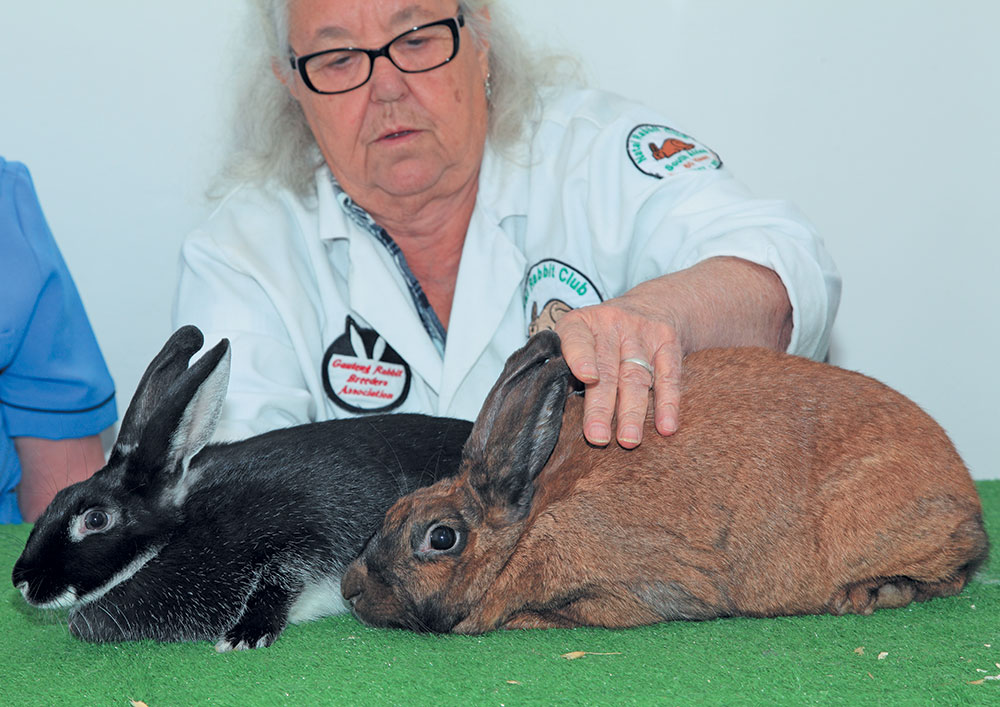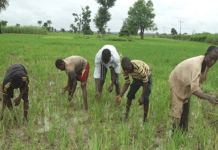While rabbit farming can be fairly lucrative, it is not a get-rich-quick scheme. Glenneis Kriel spoke to Karoline Steenekamp about the do’s and don’ts when starting a rabbit enterprise.
If there is anybody in South Africa who knows about rabbit farming, it is Karoline Steenekamp.
One could say she was born into the industry, as her mother, who was a rabbit judge, breeder and author of the book Rabbit Breeding in South Africa, gave birth to her in between judging rabbits at the Rand Easter Show.
“After her contractions started, my mother quickly finished her judging before leaving for hospital. She returned to the show the very next day, with me in her arms,” Karoline says.
Karoline herself went on to become an internationally acclaimed rabbit judge and one of only four judges in South Africa. She also boasts considerable production experience, having farmed in various locations, including Johannesburg and Cape Town.

“Our last rabbitry consisted of 2 500 rabbits. I never liked the idea of producing rabbits only for the meat market, though, so I focused on Angora rabbits. My late husband managed a large section of meat and fur breeds,” she says.
Karoline impatiently dismisses the idea of rabbit production as an easy money-maker.
“A company back in the 1970s advertised in all the major agricultural magazines that rabbit production was like farming with US$20 bills. People lost millions of rands because of the scheme,” she recalls.
The basic rules
While it requires plenty of dedication and hard work, rabbit farming has the potential to generate good primary and additional income streams, as well as uplift rural communities.
There is, however, no blanket recipe for success, as production protocols differ according to the breed of rabbit chosen, the type of housing used, the production aim, and the climatic conditions.
Nonetheless, according to Karoline, the following principles are non-negotiable:
- Firstly, establish a ready market right at the start. This applies regardless of whether the end product is meat, wool, pelts or manure.
- Secondly, find a mentor. An aspiring rabbit farmer should learn the whys and wherefores from an experienced farmer before building cages or buying stock, so that you understand how to feed and care for the animals.n“Find a mentor you can turn to if you face a problem,” says Karoline.nAn easy way to find a mentor is by joining a rabbit club. There are three recognised clubs in South Africa: the Cape Rabbit Club, the Natal Rabbit Cluband the Gauteng Rabbit Breeders’ Association. “Most of the breeding stock in South Africa is produced from breeders who belong to these clubs. So join a club or employ someone to help you,” she says.
- Thirdly, forget about free-range production. Rabbits have to be kept in housing or cages, as they love to burrow. When kept outside, they are sure to escape before too long. They are also safer in cages, away from predators such as rats, birds of prey, dogs and snakes, as well as pests such as mites (which can cause mange) and fleas. Rabbits are surprisingly territorial, explains Karoline. “Does search out their own space within a communal burrow, even though they might share communal feed and toilet areas, and they’re therefore quite content to live in single cages within sight and smell of other rabbits.”
- Fourthly, choose the right- sized cages. Overcrowding causes stress and poses health risks, as it drives up ammonia levels, which might cause respiratory and other problems. The actual stocking density depends on the type of housing and the breed produced, but a fair cage size for most breeds is about 600mm (L) x 500mm (W) x 450mm (H). The last figure, the height, is important, as rabbits need to stretch after eating to get rid of pockets of sour air that form in their intestines during eating and resting.
“If they don’t stretch, the gas gets trapped, causing digestion problems. Ideally, when the rabbit stretches, its ears shouldn’t touch the top of the cage,” Karoline says.
Fifthly, like all livestock farmers, you have to be a good stockman. This means honing your ability to quickly identify problems and spot sick animals before things spiral out of control.
Karoline believes in the saying, ‘It’s the farmer’s eye that feeds the stock’.
“This implies that a farmer not only has to use his or her senses to ensure that all is well, but spend time in the rabbitry to check whether or not the animals are thriving.
A farmer should be quick to identify a sick animal by merely looking at its posture or picking up a sour smell. Signs of ill health might be a dull eye, hunched-up body, breathing difficulties or a runny tummy,” says Karoline.
For this reason, she prefers cages to be visible.
“Avoid multi-tiered cages that are above or below eye level. A commercial farmer might be able to manage a three-tier system if there’s enough airflow in the rabbitry, but I prefer two as it allows me to see what’s happening in the cages.”
Unfortunately, veterinarians who specialise in rabbits are few and far between in South Africa, and transporting the animals to and from a vet is expensive. A farmer should therefore employ strict biosecurity measures to prevent disease outbreaks.
Sound hygiene is another tool for preventing diseases.
“Rabbits that are kept under dirty conditions or receive contaminated feed tend to develop coccidiosis, which can explode into an epidemic if not treated quickly,” cautions Karoline.
“The best way to prevent this disease is to keep the rabbits, cages, water and feed clean. Sulphur drugs are the best treatment when the disease breaks out.”
Rabbit farmers must have access to enough good quality food and water. Hay is an essential part of rabbits’ feeding requirements, and helps prevent air pockets from turning sour in a rabbit’s gut. The hay may be home-grown or bought in.
Commercial premixed lucerne-based pellets are available on the market. Karoline advises against using pellets containing antibiotics.
“Some companies put coccidiostats in their feed to prevent coccidiosis, but this might result in the animals not responding to medication should they require it later.”
In community projects, vegetable surpluses and scraps can be used as feed instead of pellets, provided that a sufficient quantity is available and that high-quality hay is provided as well.
Karoline warns, however, that certain foods, such as cabbage, should be fed in very small quantities, as they can cause bloating. Other foods, such as avocado and rhubarb, can be highly toxic to rabbits. Many websites contain lists of foodstuffs that are dangerous to rabbits.
Diet determines the slaughter age
Karoline estimates that a rabbit on premixed feed might reach slaughter age at 10 to 14 weeks, whereas rabbits on hay and garden excess might do so only at 20 to 30 weeks.
The coat of the rabbits on hay and vegetables will, however, be significantly better than that of rabbits on premixed rations, as the older animal will have a more mature pelt at slaughter.
At 12 weeks, a rabbit is still carrying a baby coat.





